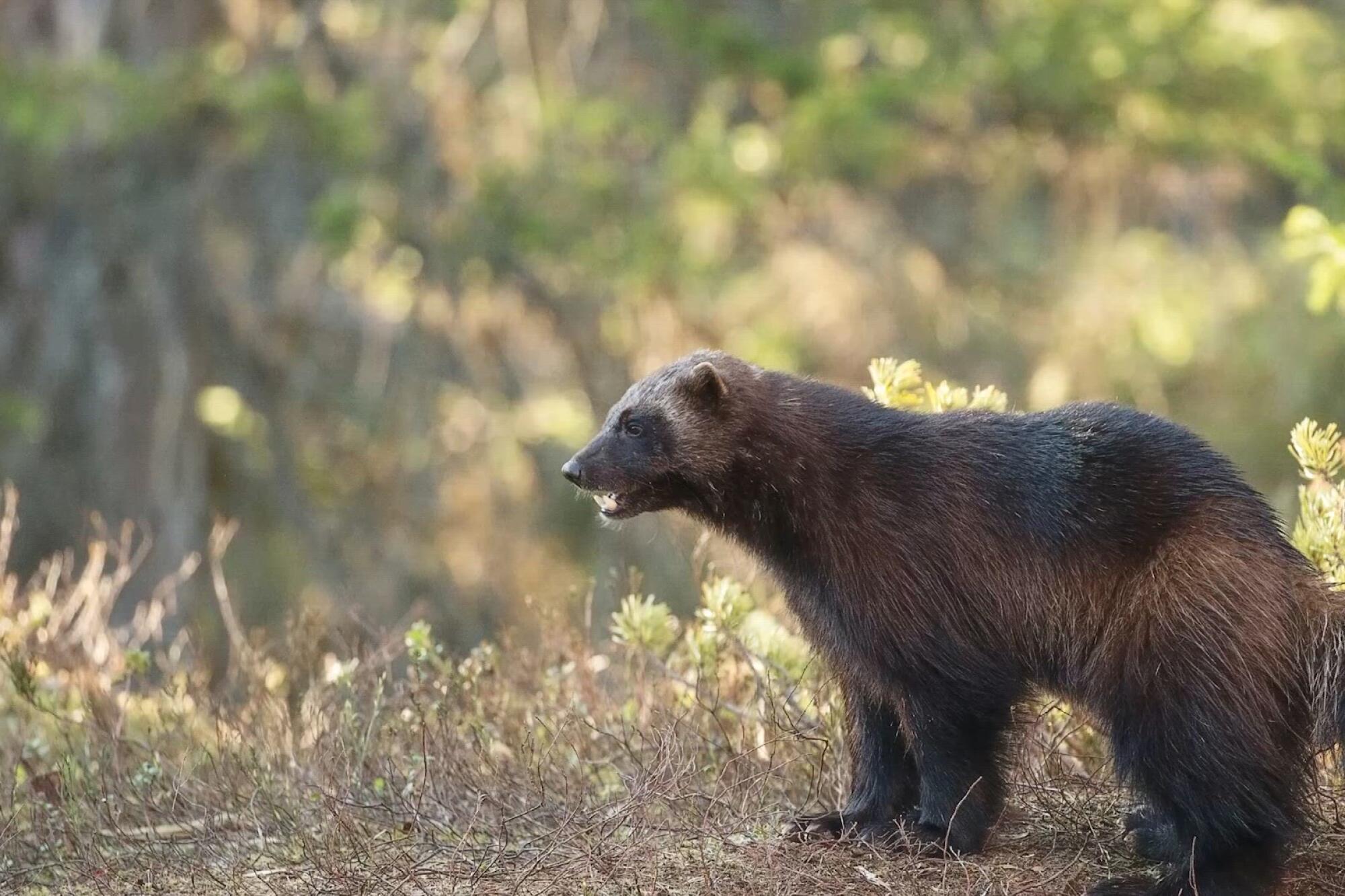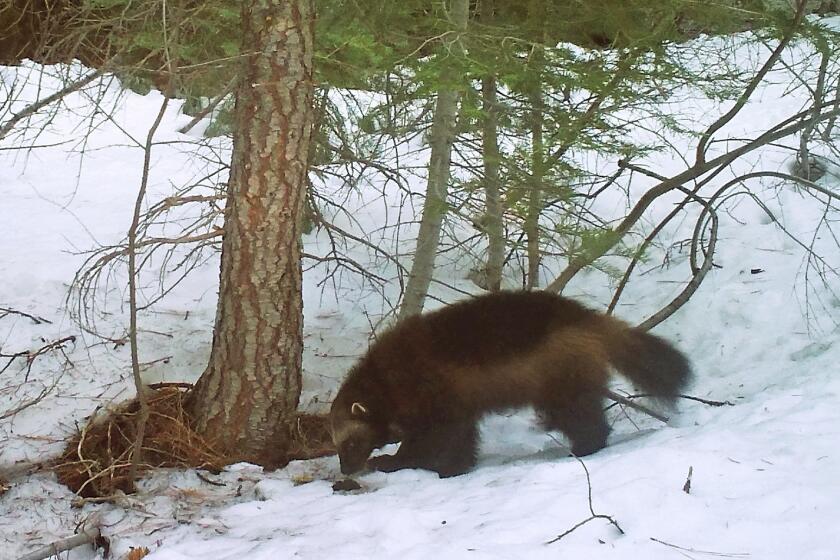
- Share via
Those who want to see wolverines reintroduced to California were dealt a setback this week.
Proposed legislation to explore what it would take to reintroduce the rugged and elusive apex predator to the state’s high mountains died Thursday at the state Capitol.
A similar effort in Colorado, however, is moving forward.
Wolverines vanished from California more than a century ago, a casualty of trapping, hunting and poisoning. Rare sightings of one in Yosemite National Park and other areas last year spurred a flurry of excitement — and played a role in the timing of the legislation.
Proposed legislation seeks to reintroduce wolverines to California, which lacks a permanent population of the protected animals.
While the passage of Assembly Bill 2722 wouldn’t have triggered the immediate importation of the animals, it would have required state wildlife officials to conduct a feasibility study on a reintroduction or supplementation program with the goal of restoring a viable population.
But the bill also arrived as the state faces a staggering budget deficit totaling tens of billions of dollars. It met its end in the Assembly Appropriations Committee, which reviews bills that affect the budget. The California Department of Fish and Wildlife estimated the feasibility study would cost $235,000, the amount needed to hire a scientist to carry out the work.
Assemblymember Laura Friedman (D-Glendale), who introduced the bill, said in a statement that a tough budget year meant some proposed laws would fizzle to allow other more vital ones to move forward.
“My hope is that in a better budget year, a bill just like this will move forward,” said Friedman, who is likely headed to the U.S. House of Representatives. “California must support recovery efforts to bring this iconic animal back to California’s wilderness.”
Brendan Cummings, conservation director for the Center for Biological Diversity, which sponsored the bill, said he wasn’t surprised by the bill’s fate, given the budget woes, but wasn’t going to give up on the underlying goal.
“These animals shared this landscape — are part of California,” he said. “As a Californian, I feel it’s my obligation to do everything possible to bring back the extirpated, missing species that are no longer here in a functional way because of human activity.”
AB 2722 was held without discussion or debate during a biannual culling process known as the suspense file.
Once teetering on extinction, the least Bell’s vireo is making a comeback in areas along the Los Angeles River, including a bustling park in northeast L.A.
No one has attempted to bring the animal back to areas from which it vanished, but Colorado could become the first state to try. This month, lawmakers there overwhelmingly voted in favor of a wolverine reintroduction plan, which is now on the governor’s desk for final approval.
Wolverines resemble diminutive bears but are actually the largest members of the weasel family, weighing up to 40 pounds. They possess powerful jaws capable of taking down predators far larger than themselves. Snowshoe-like feet allow them to cruise over deep powder, and they’re known to traverse large distances. They’re renowned loners, with males occupying territories of up to 500 square miles.
“They’re like the patron animal of mountaineers, skiers and introverts,” said Rebecca Watters, executive director of the Wolverine Foundation, earlier this year.
Wolverines are exceedingly rare in the lower 48 states and the population in the contiguous U.S. — roughly just 25 to 300 — received federal protection under the federal Endangered Species Act last year. California’s conservation efforts date back to the early 1970s, when wolverines were designated as a fully protected species under the state Fish and Game Code and listed as threatened under the state Endangered Species Act.
Proponents of reintroducing the species have said there is plenty of habitat to accommodate the animals, which naturally live in low density in snowy, high-elevation areas. But some researchers — including Watters — would prefer to see the species propagate naturally, expressing concern that wolverines will die during the reintroduction process while there’s no guarantee of success.
David Garcelon, president of the Institute for Wildlife Studies, believes the risk is worth it. For about 20 years, Garcelon has looked into bringing back the animals, which he calls “an icon of wilderness.”
“I really want to give the wolverines a chance,” Garcelon previously told The Times, adding that with uncertainties posed by climate change and other factors, “I’m not really in favor of waiting another 50 years to see if they can do it on their own.”
Toward a more sustainable California
Get Boiling Point, our newsletter exploring climate change, energy and the environment, and become part of the conversation — and the solution.
You may occasionally receive promotional content from the Los Angeles Times.









